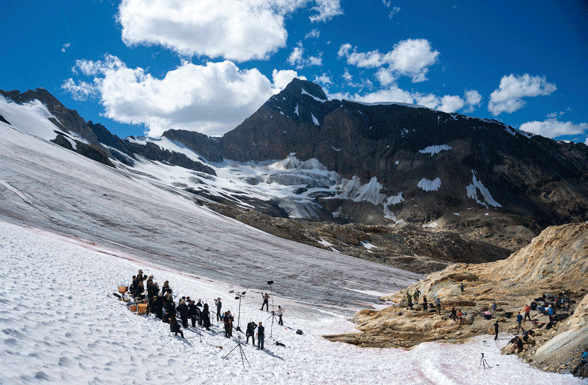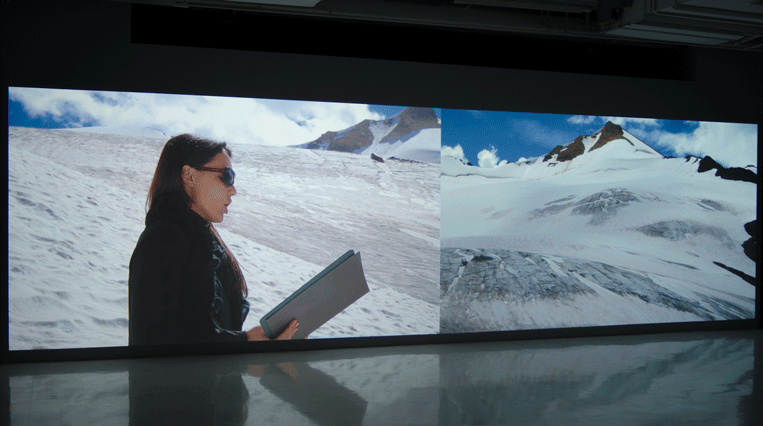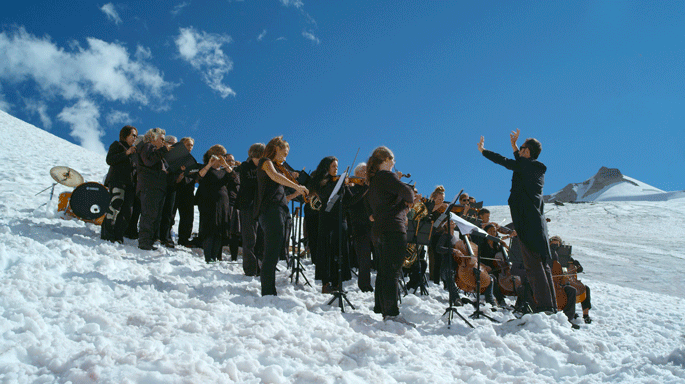As the sun turns red and a haze covers the blue sky, it is clear that climate change is only getting worse. Eight years later, Paul Walde’s sound performance and video installation Requiem for a Glacier is as important as ever.
Made in 2013 in response to the Jumbo Glacier Ski Resort Development, Requiem for a Glacier highlights the endangerment of the glacier that continues beyond the ski resort plan.
“Even if the development project didn’t go ahead, the glacier is still under threat from climate change,” Walde said in an interview with Arts Help.
“I wanted to draw attention to the fact that these are endangered wild spaces,” Walde said. “Declaring it dead in some ways, prematurely, would galvanize people to do something about it.”

The United Nations’ Sustainable Development Goal (SDG) 13 on Climate Action and Goal 15 on Life on Land both stress the importance of reducing greenhouse gas emissions and investing in sustainable solutions. According to the UN, from 1901 to 2010, the warming oceans and melting ice resulted in a 19 cm increase in the global average sea level.
The situation continues to worsen. In April, the Guardian reported scientists found the Thwaites glacier in the Antarctic is at a higher risk of breaking than previously imagined. The Washington Post reported in June that the Pine Island glacier in West Antarctica is “tearing itself apart”. Not only will the sea levels rise, but the ice loss would be irreversible.
Direct actions also negatively affect glaciers. “We’re hastening the demise of a lot of these environments by encroaching into them,” Walde said.
While the piece was performed at the Jumbo Glacier in the Purcell Mountains, it reflects on the impact of urban sprawls, suburban expansions and the spread of resort communities into natural spaces. Consequently, there are fewer spaces for animals, forests and ecological diversity.

After consulting with members of the Ktunaxa First Nations about how to best develop the piece, Walde thought to perform a premature requiem at the glacier. “I was looking for a form of music that would allow us to frame that landscape in a certain way.”
Walde created the video installation using footage filmed from various angles capturing the audience, performers and landscape. “I had some key images in my mind of what I wanted to represent, and built the performance footage around that,” Walde said. “The music organized the piece, conceptually.”
The 40-minute piece includes four movements, each with slightly different focuses. The first movement uses the first section and the backgrounder from the British Columbia government press release for the Jumbo resort development plan for the libretto, translated into Latin.
Both the first and second movements use the word JUMBO as the basis of the music notation. The third movement includes a translation of the average yearly temperatures from 1968 to 2010 into musical notes and the fourth movement focuses on the buildup of carbon dioxide in the atmosphere.
“I wasn’t trying to emulate necessarily the structure or the harmony [of a requiem] so much, it was more the timber and the instrumentation that would generate a certain sonic context for the piece,” Walde said. “It’s definitely not written in a traditional way, and I had no experience writing for an orchestra before, so it was all brand new.”
Walde wanted the audience to have opportunities to interpret and reflect on the piece on a personal level. “More people are waking up to issues of climate change and starting to have some consciousness about land use,” Walde said. “I think that this piece is connecting with people and people are making the programming choices as well.

After a trip to Yukon in 2000, Walde noticed the melting permafrost and began reading about how the subsequently released gases can accelerate climate change. “I became really concerned with climate change,” he said. “I found it quite frightening.”
Requiem for a Glacier is still shown at the Montreal Museum of Fine Art until September 12, 2021. But Walde is still creating art. He is currently working on a piece on forest management and the old-growth forests.
While it is still in its early works, Walde aims for his new piece to have a more positive tone. “I think that [a hopeful message] is lacking in a lot of media,” he said. “Forests are resilient, ecosystems are resilient, they’ve been around for thousands and thousands of years. We just need to find a better way to exist with these environments.”
“I really want to try to connect people’s hearts and minds, and try to find a way to create an emotional impact in a good way.”
